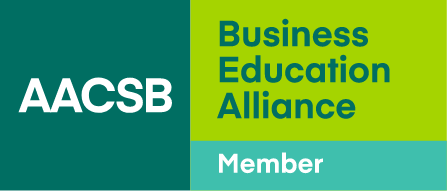Peer-Reviewed Cases as Intellectual Contributions
- When schools recognize case writing as a valuable form of research output, they present faculty as thought leaders, strengthen relationships with industry, and better prepare students for the workplace.
- Schools also can apply the production of case studies toward accreditation standards that focus on the creation and dissemination of knowledge.
- Schools can encourage faculty to write more case studies by providing them with funding, mentorship, and incentives such as bonuses and workload reductions.
How an institution values teaching and research influences how its faculty members prioritize their activities. If a school places a high importance on case writing, it can foster a culture where case production can flourish.
For instance, one school that has a deep commitment to case writing is China Europe International Business School (CEIBS) in Shanghai. The school embraces a broad definition of research, from traditional academic inquiry to real-situation research, including cases. “We place an equal emphasis on high-quality teaching and research,” says Shimin Chen, director of the CEIBS Case Center.
The same is true at ESCA Ecole de Management in Casablanca, Morocco, which launched a Business Case Center ten years ago with the objective of promoting case studies as a useful and impactful form of intellectual contribution. According to the school’s president, Thami Ghorfi, “We consider case studies to be essential forms of intellectual contributions that bring a wealth of knowledge to the classroom. We put a lot of emphasis not only on producing case studies, but also on using them as a teaching method. While we support many forms of intellectual contributions, we recognize cases as one of the most valued and encouraged forms of publication.”
However, Ghorfi feels that while many schools recognize cases internally, there is still work to be done externally before cases receive the same recognition as journal articles. He says, “The global ranking bodies must give more recognition to case writing so that peer-reviewed cases get equal weighting.”
The Benefits of Case Writing
That said, until global rankings organizations do more to reward case writing, business schools can do their part to incentivize this form of intellectual contribution. For instance, it’s no accident that IMD Business School in Lausanne, Switzerland, has one of the world’s most well-established case collections.
“We count and value all research outputs equally and have put in place mechanisms to create an equivalence so that there is no stigma or prejudice associated with case writing—in fact, it’s encouraged,” explains Anand Narasimhan, IMD’s dean of research. When a professor creates a cutting-edge case, he says, “it is appreciated as much as any other research activity.”
As Narasimhan and other administrators point out, a school can realize numerous benefits when it places case writing at the heart of its research output.
It can better prepare students for the workplace. Because cases simulate real-world business situations and decision-making processes, students “gain current and relevant knowledge on forward-looking and innovative business theories and practices,” says Chen. “They also develop competencies and critical skills in analysis, decision-making, communication, teamwork, and time management.”
Until global rankings organizations do more to reward case writing, business schools can do their part to incentivize this form of intellectual contribution.
“Cases have the distinctive quality of bridging the gap between theory and practice,” Ghorfi adds. “Schools that encourage the use of cases ensure that their students are fully exposed to tangible practical learning experiences to strengthen their skills.” When faculty use cases in the classroom, he says, students are well-prepared “to tackle the challenges and complexities of the professional world.”
It can present its faculty as thought leaders. “We find that writing our own field-based cases highlights to our participants that we are a school that is constantly engaging with the business community and with cutting-edge businesses,” Narasimhan says. This visibility can be an important consideration for applicants choosing where they want to attend school.
It can provide engaging learning experiences for students. According to Chen, “cases substantially contribute to improved teaching effectiveness and student satisfaction.” As a bonus, says Narasimhan, students are likely to be taught by the case authors themselves.
It can build bridges with industry partners. When professors collaborate with companies on cases, they deepen relationships with outside organizations. Students gain access to top executives, and schools enjoy enhanced connections with company leaders. Says Narasimhan, “Executives involved in the case are often motivated to sustain the association—for example, by becoming executives-in-residence or even by funding a research center.”
Adds Chen, “Writing cases provides business school faculty with opportunities to engage with the business community to create practice-relevant knowledge that helps businesses reflect on and improve practices, thus leading to a positive and broader societal impact.”
Visibility and Validation
There are two more reasons that a school should encourage its faculty to write cases, say these administrators:
Case writing can meet accreditation standards that require schools to create and disseminate knowledge. At CEIBS, which places an equal emphasis on quality teaching and relevant research, cases are an integral part of the accreditation efforts. Chen notes that cases fit into AACSB’s broad definition of intellectual contributions, which can relate to discovery, real-world applications, or teaching. Because the cases position CEIBS as a thought leader, Chen says, they also enable the school to fulfill the accreditation requirement of creating positive societal impact.
Case writing can meet accreditation standards that require schools to create and disseminate knowledge.
As Ghorfi points out, “Accreditation bodies also encourage partnerships, so cases created with businesses are a strong testimonial of the strength and quality of the school’s connection to the business world.”
During accreditation efforts at IMD, says Narasimhan, “We present our research and thought leadership holistically, and cases are a key part of the picture. The impact of our case efforts is assessed by tracking indicators of dissemination and prestige, which are included as part of the evidence.”
Case writing brings the school enhanced prestige in the wider management education community. The Case Centre, an independent not-for-profit based in the U.K., houses and distributes a diverse collection of cases from business schools worldwide. It rewards excellence in case teaching and writing through awards, competitions, and rankings of best-selling authors. The Case Centre’s new Impact Index also recognizes the global reach and impact of an organization’s case-writing efforts, and its online platform provides authors with access to sales and adoption data, which allows them to gauge the impact of their work.
Faculty can extend their global impact by submitting to peer-reviewed journals that specifically publish cases. These include Case Focus, which is produced by The Case Centre and explores management and business situations in the Middle East and Africa; The CASE Journal from Emerald Publishing; and Case Research Journal from the North American Case Research Association.
A Reflection of the Mission
For a school to derive the most value from an emphasis on case writing, it should encourage faculty to create studies that align with its clearly articulated mission. For example, IMD’s mission of “cultivating leaders and organizations that effect positive change in society” aligns well with the reciprocal interaction between industry and academia, says Narasimhan.
At ESCA, the driving force behind all intellectual contributions is the need to reflect the local context. Says Ghorfi, “Our mission is to ‘educate managers who foster innovation, internationalization, and sustainability in companies within Africa.’ We encourage faculty to develop local and regional cases to provide business leaders and academics with knowledge about the dynamic business environment of the region and to answer to the lack of cases dealing with its realities.”
For a school to derive the most value from an emphasis on case writing, it should encourage faculty to create studies that align with its clearly articulated mission.
At CEIBS, both teaching and research reflect the school’s mission of “China Depth, Global Breadth.” As part of its goal to be a highly respected international business school, CEIBS seeks to promote “China’s social and economic development through high-impact knowledge creation and dissemination,” says Chen.
In the early years, he adds, the school primarily used Western cases in the classroom. But in response to student demand for greater knowledge about China’s business environment and economy, the school established the CEIBS Case Center in 2001. “Over the past 22 years, we have produced more than 1,500 China-themed cases, supporting classroom teaching, dramatically improving student learning experiences, and serving the school’s mission.”
Support and Incentives
A school that wants faculty to engage in more case writing can take two key steps.
First, it can offer support. For instance, IMD provides mentoring, guidance, editorial services, and funding to faculty involved in researching and creating cases, says Narasimhan. “Our in-house teams also take care of the formalities of case registration, case release, and copyright clearing, and they publicize a case once it’s published.”
Second, the school can leverage incentives. At IMD, faculty members receive research bonuses dependent on their output. “We don’t discriminate between writing cases and publishing articles. All outputs are counted, and all outputs are rewarded,” says Narasimhan.
At CEIBS, where faculty are required to develop China-related research and cases of high impact, the school has policies designed to encourage faculty to write more and better studies. To that end, CEIBS has determined that “one case plus its teaching notes is equivalent to one peer-reviewed journal article or a scholarly book chapter for a reputable publisher,” says Chen. “Faculty members also get a workload reduction if they win top prizes in global case writing and teaching competitions.”
When a school promotes case writing, says ESCA’s Ghorfi, it can “build a community of case lovers who disseminate the culture and the spirit of the case method.”
If institutions commit to case writing, these intellectual contributions no longer need to be viewed as the poor relations to articles in top-tier journals. Instead, they can be avenues for a school to create more engaging classroom sessions, build ties with industry, and enjoy recognition among its peers






